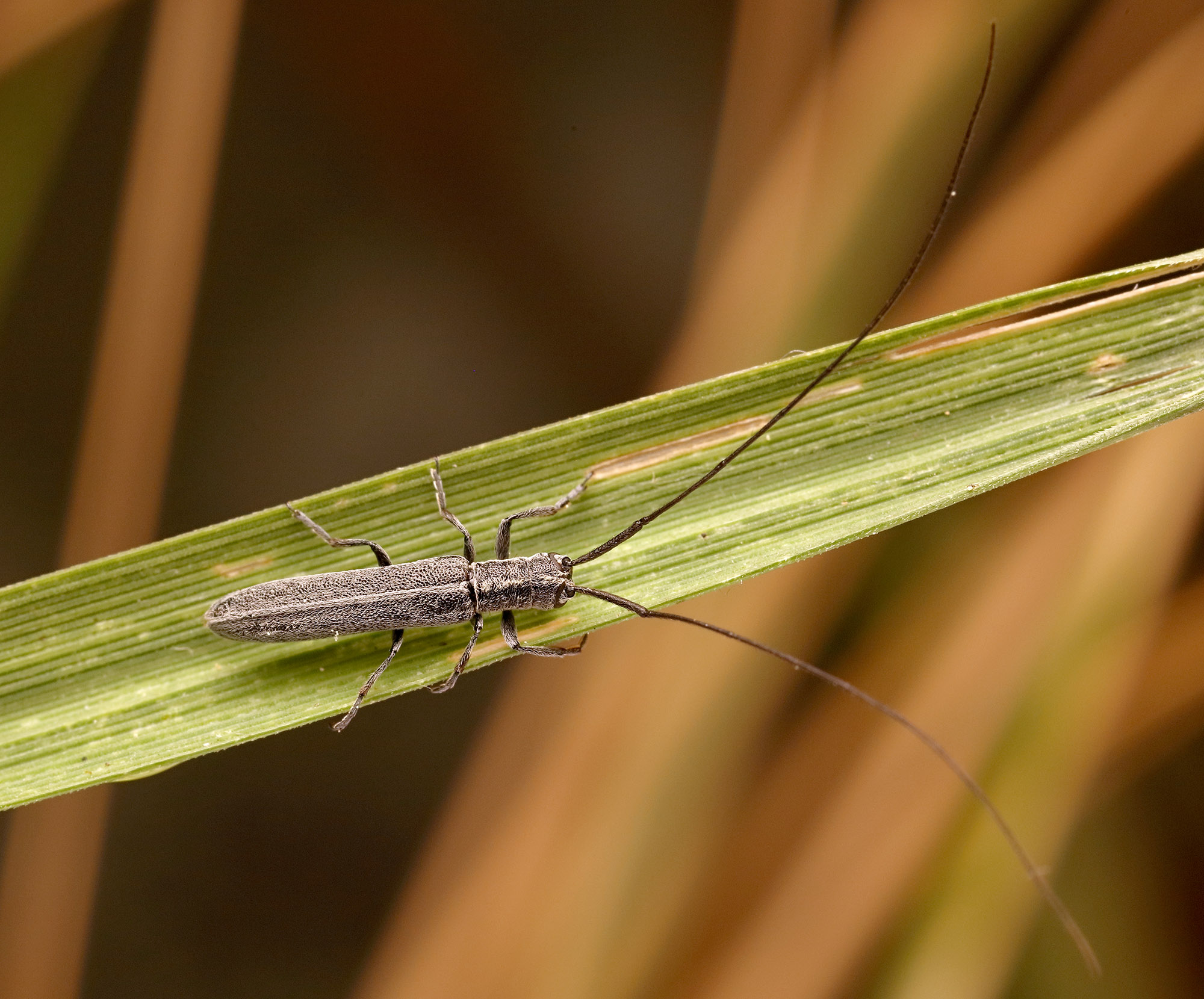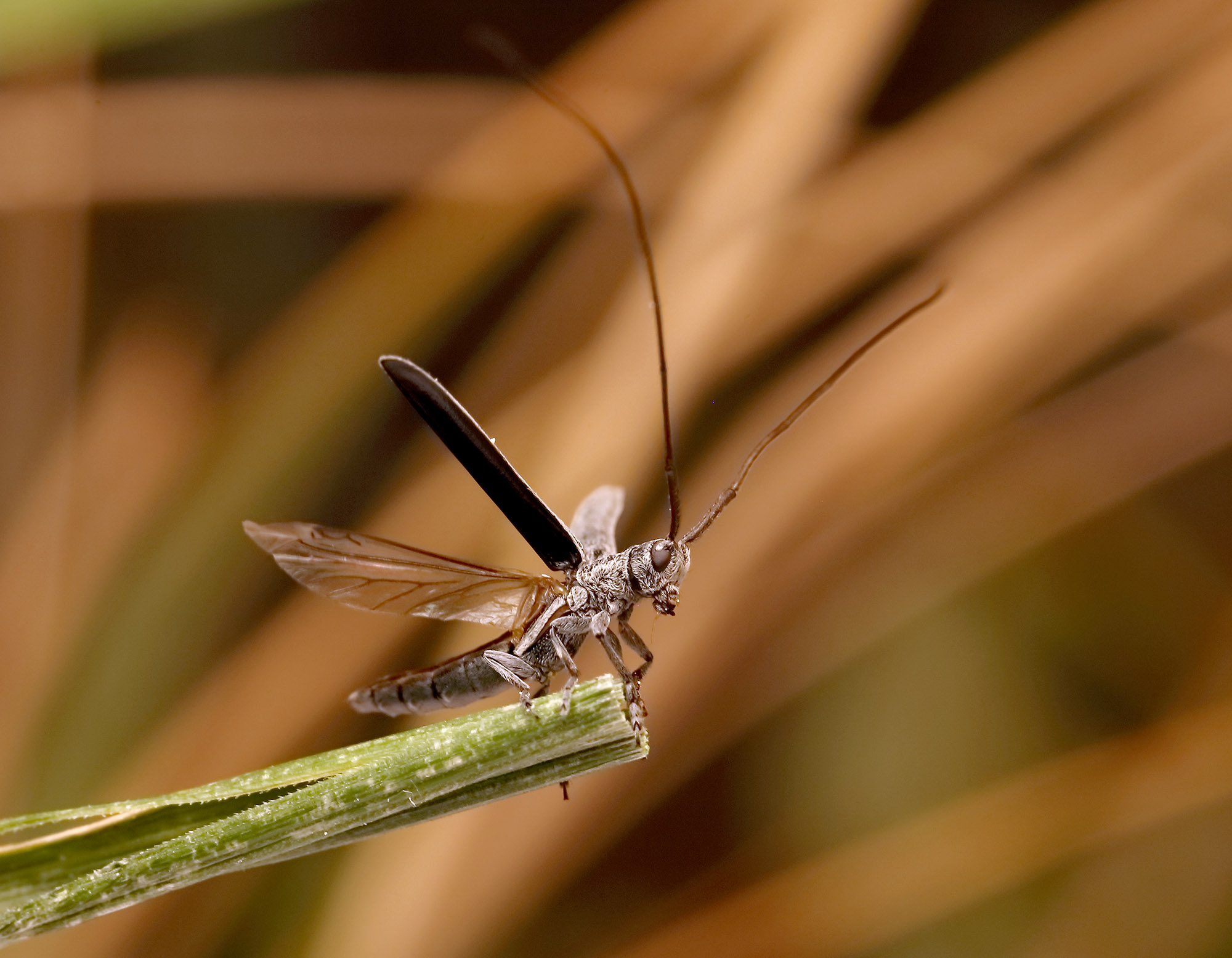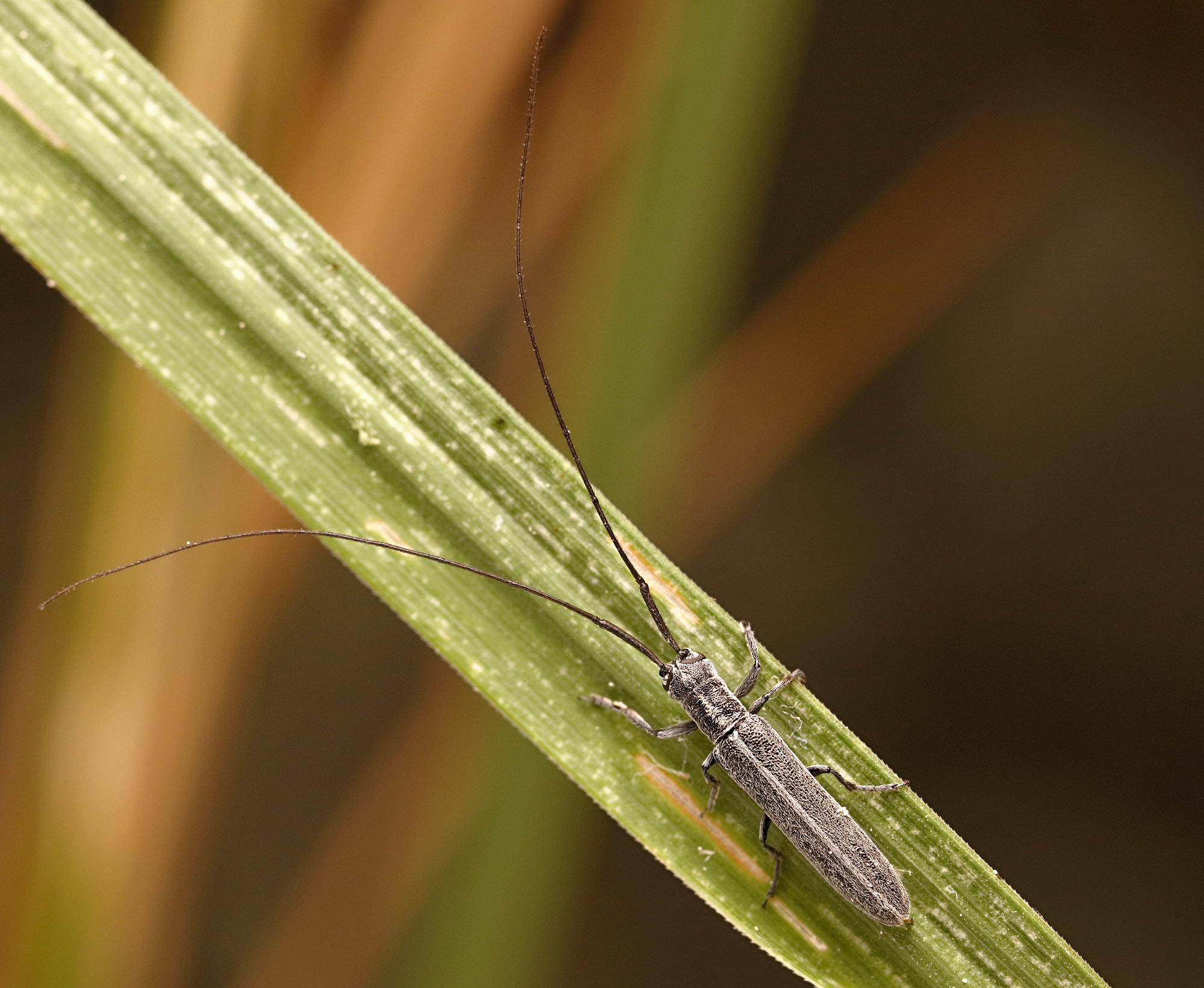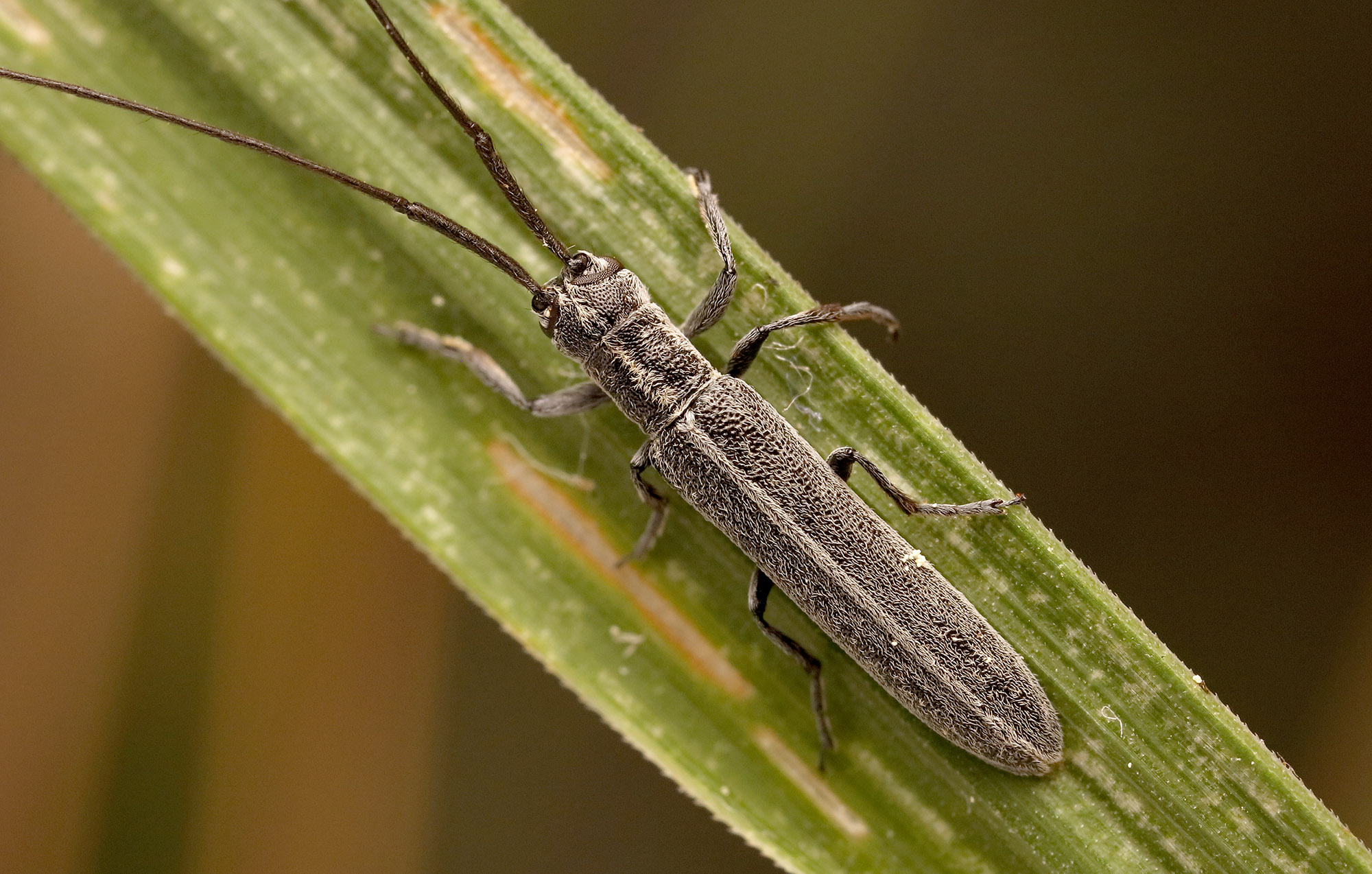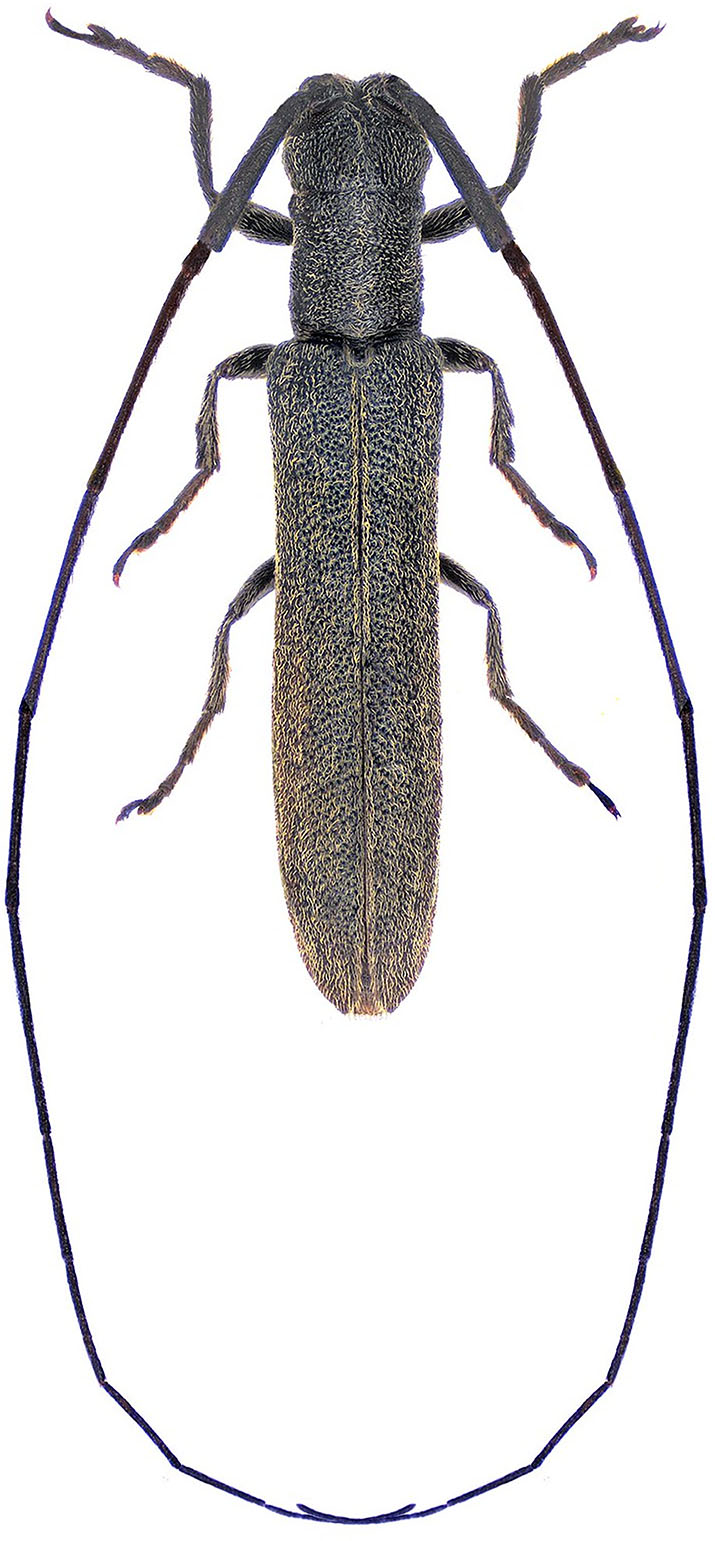
[Photo © David Navrátil, click on the picture for 4K resolution]
|
Calamobius filum prefers dry, warm, high-grass steppe or meadow locations. Adults sit in the characteristic posture on the host plants, pressed against the stalk, antennae stretched forward. Calamobius is
an oligophagous grass-feeding species on the Poaceae family (the most common host plants are false oat-grass (Arrhenatherum elatius), cock's-foot (Dactylis glomerata), false barley (Hordeum murinum),
common oat (Avena sativa) and others). The female lays egg from the middle to the top of the grass stalk to the spike. The female chews a cavity, turns around and inserts an egg into the prepared opening.
The hatched larva feeds the inner part of the stalk down to the roots. By the end of August, the adult larva is preparing a 10-15 cm long space for pupation. At the top of the stem, larva then weakens its wall
and clogs the passage by frass (end of September). At the point of weakening, the stem breaks during winter, which does not prevent further development of the larva, as the upper opening is well blocked by frass.
The larva overwinters and pupates in the spring. Adults occur from mid-May to mid-July, with the peak of occurrence in June [❖].
Thanks to climatic changes in the Central Europe, Calamobius has been expanding from the South-East in a north-westerly direction since the 1950s (the nearest natural area of occurence to the Czech lands was
the Pannonian Basin). The species was recorded for the first time in Southern Moravia during the 1980s and it also has been found in several localities in Bohemia in recent years [✧].
C. filum has been described from Florence environs (Italy) as Saperda filum by Pietro Rossi in 1790 [✩].
| Body length: | 5 - 11 mm |
| Life cycle: | 1 year |
| Adults in: | April - July |
| Host plant: | oligophagous on various Poaceae (e.g. Dactylis, Hordeum, Arrhenatherum, Avena) |
| Distribution: | Algeria, Libya, Morocco, Tunisia, Albania, Austria, Belgium, Bosnia and Herzegovina, Bulgaria, Corsica, Crete, Croatia, Czechia, France, Germany, Greece, Hungary, Italy, Luxembourg, Malta, Montenegro, Netherlands, North Macedonia, Portugal, Romania, Russia, Sardinia, Serbia, Sicily, Slovakia, Slovenia, Spain, Switzerland, Ukraine, Cyprus, Iran, Jordan, Lebanon, Syria, Turkey |
The living beetles were swept from vegetation in
"Na Babě" natural reserve in Křivoklátsko Protected Landscape Area (Central Bohemia, Czechia) on May 22, 2020.
The mounted beetles were collected in: ♂ – Peristerona (Περιστερώνα) village environs (N34°59′00″ E32°29′14″; 370 m a.s.l., Paphos district, Cyprus) on April 11, 2022;
♀ – Skarinou (Σκαρίνου) village environs (N34°49′18″ E33°21′41″; 160 m a.s.l., Larnaca district, Cyprus) on April 13, 2022.
Collected by David Navrátil and Miroslav Polcar
|
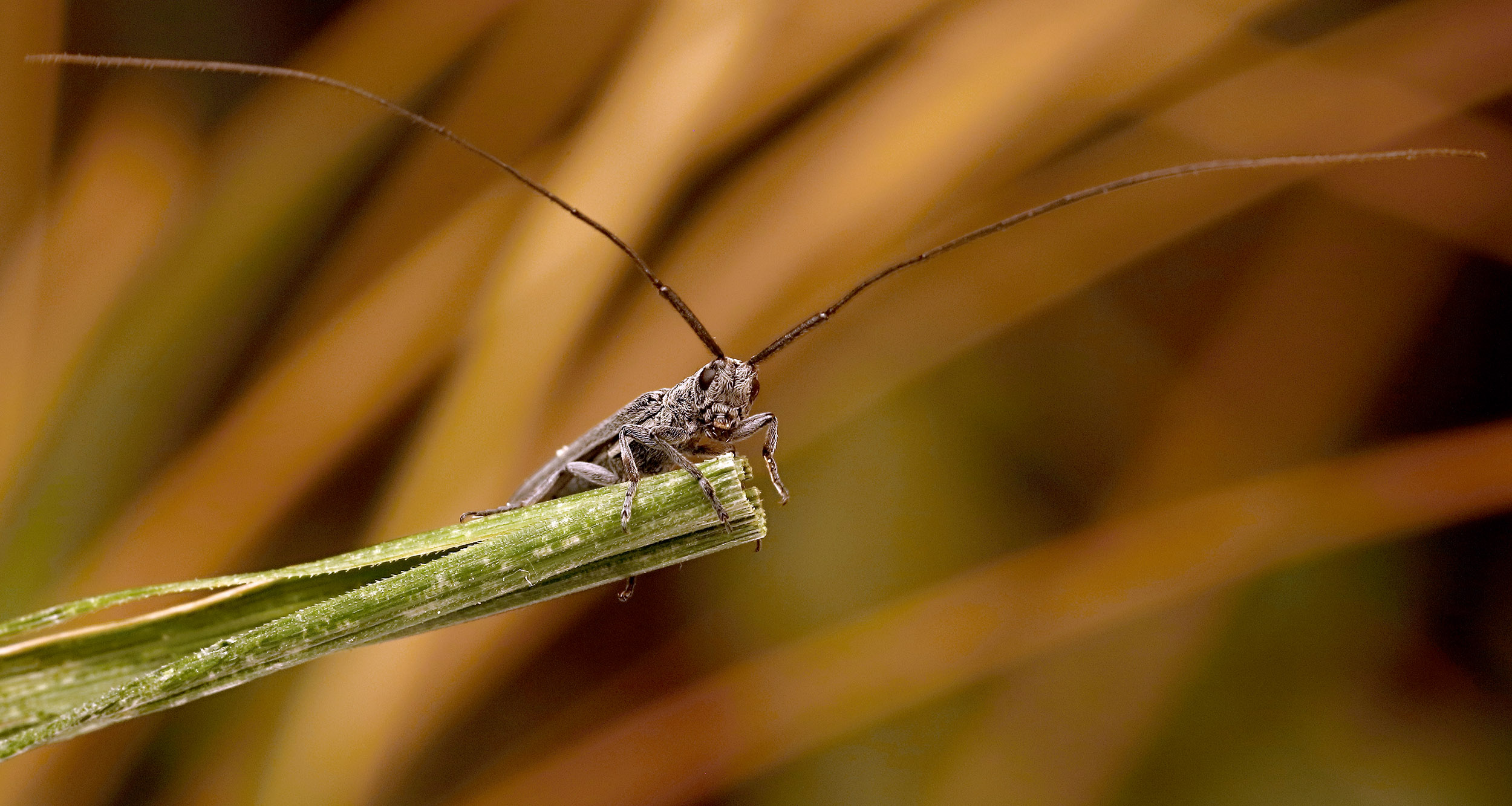

]
]
]
]
